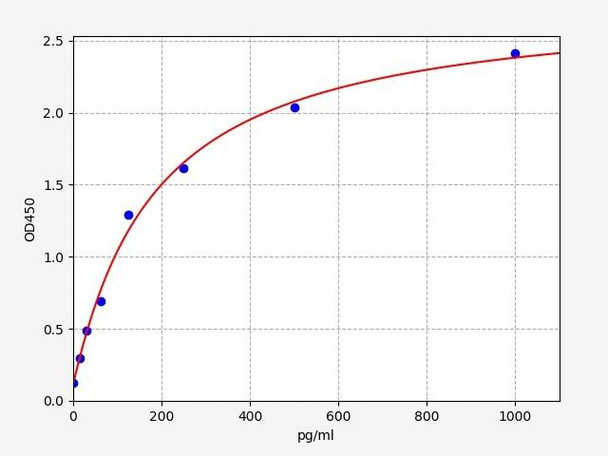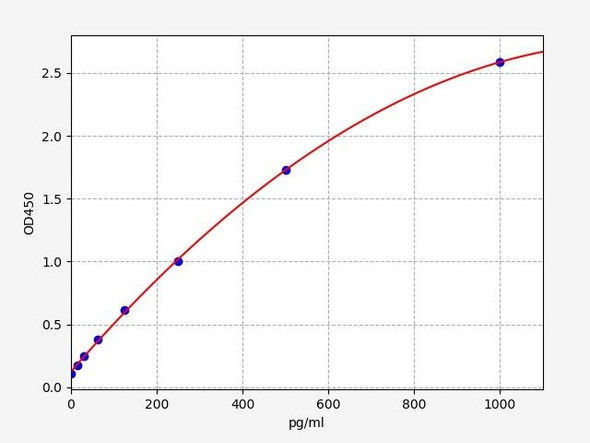Description
Rat ALAD ELISA Kit
The Rat ALAD (delta-aminolevulinic acid dehydratase) ELISA Kit is specially designed for the precise measurement of ALAD levels in rat serum, plasma, and tissue homogenates. This kit offers exceptional accuracy and selectivity, delivering consistent and dependable results, making it an excellent choice for a variety of research purposes.ALAD is an important enzyme involved in heme biosynthesis, playing a critical role in various biological processes.
Dysregulation of ALAD has been associated with lead poisoning and porphyria, highlighting its significance as a key biomarker for monitoring these conditions and exploring potential therapeutic interventions.Overall, the Rat ALAD ELISA Kit provides researchers with a valuable tool for studying the role of ALAD in health and disease, paving the way for further advancements in the field of biochemistry and toxicology.
| Product Name: | Rat Alad (Aminolevulinate Delta DehydRatase) ELISA Kit |
| Product Code: | RTFI00473 |
| Size: | 96 Assays |
| Target: | Rat Alad |
| Alias: | Alad, ALADH, Porphobilinogen synthase |
| Reactivity: | Rat |
| Detection Method: | Sandwich ELISA, Double Antibody |
| Sensitivity: | 9.375pg/ml |
| Range: | 15.625-1000pg/ml |
| Storage: | 4°C for 6 months |
| Note: | For Research Use Only |
| Recovery: | Matrices listed below were spiked with certain level of Rat Alad and the recovery rates were calculated by comparing the measured value to the expected amount of Rat Alad in samples. | ||||||||||||||||
| |||||||||||||||||
| Linearity: | The linearity of the kit was assayed by testing samples spiked with appropriate concentration of Rat Alad and their serial dilutions. The results were demonstrated by the percentage of calculated concentration to the expected. | ||||||||||||||||
| |||||||||||||||||
| Intra-Assay: | CV <8% | ||||||||||||||||
| Inter-Assay: | CV <10% |
| Uniprot: | P06214 |
| UniProt Protein Function: | ALAD: Catalyzes an early step in the biosynthesis of tetrapyrroles. Binds two molecules of 5-aminolevulinate per subunit, each at a distinct site, and catalyzes their condensation to form porphobilinogen. Defects in ALAD are the cause of acute hepatic porphyria (AHEPP). A form of porphyria. Porphyrias are inherited defects in the biosynthesis of heme, resulting in the accumulation and increased excretion of porphyrins or porphyrin precursors. They are classified as erythropoietic or hepatic, depending on whether the enzyme deficiency occurs in red blood cells or in the liver. AHP is characterized by attacks of gastrointestinal disturbances, abdominal colic, paralysis, and peripheral neuropathy. Most attacks are precipitated by drugs, alcohol, caloric deprivation, infections, or endocrine factors. Belongs to the ALADH family. 2 isoforms of the human protein are produced by alternative splicing. |
| UniProt Protein Details: | Protein type:Cofactor and Vitamin Metabolism - porphyrin and chlorophyll; EC 4.2.1.24; Lyase Cellular Component: cytosol; extracellular space; nucleus Molecular Function:identical protein binding; lead ion binding; porphobilinogen synthase activity; zinc ion binding Biological Process: heme biosynthetic process; protein homooligomerization; protoporphyrinogen IX biosynthetic process; response to activity; response to aluminum ion; response to amino acid stimulus; response to arsenic; response to cadmium ion; response to cobalt ion; response to drug; response to ethanol; response to glucocorticoid stimulus; response to herbicide; response to hormone stimulus; response to hypoxia; response to inorganic substance; response to ionizing radiation; response to iron ion; response to lead ion; response to lipopolysaccharide; response to mercury ion; response to metal ion; response to methylmercury; response to nutrient; response to nutrient levels; response to organic cyclic substance; response to organic substance; response to oxidative stress; response to selenium ion; response to toxin; response to vitamin; response to vitamin B1; response to vitamin E; response to zinc ion |
| NCBI Summary: | catalyzes the conversion of 5-aminolevulinate to porphobilinogen in heme biosynthesis [RGD, Feb 2006] |
| UniProt Code: | P06214 |
| NCBI GenInfo Identifier: | 6978483 |
| NCBI Gene ID: | 25374 |
| NCBI Accession: | NP_037031.1 |
| UniProt Related Accession: | P06214 |
| Molecular Weight: | 36,032 Da |
| NCBI Full Name: | delta-aminolevulinic acid dehydratase |
| NCBI Synonym Full Names: | aminolevulinate dehydratase |
| NCBI Official Symbol: | Alad |
| NCBI Official Synonym Symbols: | ALADR; aminolevulinatedelta-dehydratase |
| NCBI Protein Information: | delta-aminolevulinic acid dehydratase |
| UniProt Protein Name: | Delta-aminolevulinic acid dehydratase |
| UniProt Synonym Protein Names: | Porphobilinogen synthase |
| Protein Family: | Delta-aminolevulinic acid dehydratase |
| UniProt Gene Name: | Alad |
| UniProt Entry Name: | HEM2_RAT |
| Step | Procedure |
| 1. | Set standard, test sample and control (zero) wells on the pre-coated plate respectively, and then, record their positions. It is recommended to measure each standard and sample in duplicate. Wash plate 2 times before adding standard, sample and control (zero) wells! |
| 2. | Aliquot 0.1ml standard solutions into the standard wells. |
| 3. | Add 0.1 ml of Sample / Standard dilution buffer into the control (zero) well. |
| 4. | Add 0.1 ml of properly diluted sample ( Human serum, plasma, tissue homogenates and other biological fluids.) into test sample wells. |
| 5. | Seal the plate with a cover and incubate at 37°C for 90 min. |
| 6. | Remove the cover and discard the plate content, clap the plate on the absorbent filter papers or other absorbent material. Do NOT let the wells completely dry at any time. Wash plate X2. |
| 7. | Add 0.1 ml of Biotin- detection antibody working solution into the above wells (standard, test sample & zero wells). Add the solution at the bottom of each well without touching the side wall. |
| 8. | Seal the plate with a cover and incubate at 37°C for 60 min. |
| 9. | Remove the cover, and wash plate 3 times with Wash buffer. Let wash buffer rest in wells for 1 min between each wash. |
| 10. | Add 0.1 ml of SABC working solution into each well, cover the plate and incubate at 37°C for 30 min. |
| 11. | Remove the cover and wash plate 5 times with Wash buffer, and each time let the wash buffer stay in the wells for 1-2 min. |
| 12. | Add 90 µL of TMB substrate into each well, cover the plate and incubate at 37°C in dark within 10-20 min. (Note: This incubation time is for reference use only, the optimal time should be determined by end user.) And the shades of blue can be seen in the first 3-4 wells (with most concentrated standard solutions), the other wells show no obvious color. |
| 13. | Add 50 µL of Stop solution into each well and mix thoroughly. The color changes into yellow immediately. |
| 14. | Read the O.D. absorbance at 450 nm in a microplate reader immediately after adding the stop solution. |
When carrying out an ELISA assay it is important to prepare your samples in order to achieve the best possible results. Below we have a list of procedures for the preparation of samples for different sample types.
| Sample Type | Protocol |
| Serum: | If using serum separator tubes, allow samples to clot for 30 minutes at room temperature. Centrifuge for 10 minutes at 1,000x g. Collect the serum fraction and assay promptly or aliquot and store the samples at -80°C. Avoid multiple freeze-thaw cycles. If serum separator tubes are not being used, allow samples to clotovernight at 2-8°C. Centrifuge for 10 minutes at 1,000x g. Removeserum and assay promptly or aliquot and store the samples at-80°C. Avoid multiple freeze-thaw cycles. |
| Plasma: | Collect plasma using EDTA or heparin as an anti-coagulant. Centrifuge samples at 4°C for 15 mins at 1000 × g within 30 mins of collection. Collect the plasma fraction and assay promptly or aliquot and store the samples at -80°C. Avoid multiple freeze-thaw cycles.Note: Over haemolysed samples are not suitable for use with this kit. |
| Urine & Cerebrospinal Fluid: | Collect the urine (mid-stream) in a sterile container, centrifuge for 20 mins at 2000-3000 rpm. Remove supernatant and assay immediately. If any precipitation is detected, repeat the centrifugation step. A similar protocol can be used for cerebrospinal fluid. |
| Cell Culture Supernatant: | Collect the cell culture media by pipette, followed by centrifugation at 4°C for 20 mins at 1500 rpm. Collect the clear supernatant and assay immediately. |
| Cell Lysates: | Solubilize cells in lysis buffer and allow to sit on ice for 30 minutes. Centrifuge tubes at 14,000 x g for 5 minutes to remove insoluble material. Aliquot the supernatant into a new tube and discard the remaining whole cell extract. Quantify total protein concentration using a total protein assay. Assay immediately or aliquot and store at ≤ -20°C. |
| Tissue Homogenates: | The preparation of tissue homogenates will vary depending upon tissue type. Rinse tissue with 1X PBS to remove excess blood & homogenizein 20ml of 1X PBS (including protease inhibitors) and store overnight at ≤ -20°C. Two freeze-thaw cycles are required to break the cell membranes. To further disrupt the cell membranes you can sonicate the samples. Centrifuge homogenates for 5 mins at 5000xg. Remove the supernatant and assay immediately or aliquot and store at -20°C or-80°C. |
| Tissue Lysates: | Rinse tissue with PBS, cut into 1-2 mm pieces, and homogenize with a tissue homogenizer in PBS. Add an equal volume of RIPA buffer containing protease inhibitors and lyse tissues at room temperature for 30 minutes with gentle agitation. Centrifuge to remove debris. Quantify total protein concentration using a total protein assay. Assay immediately or aliquot and store at ≤ -20 °C. |
| Breast Milk: | Collect milk samples and centrifuge at 10,000 x g for 60 min at 4°C. Aliquot the supernatant and assay. For long term use, store samples at -80°C. Minimize freeze/thaw cycles. |






